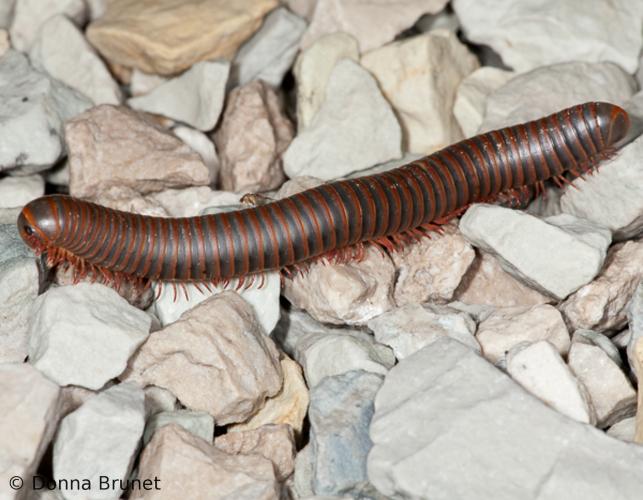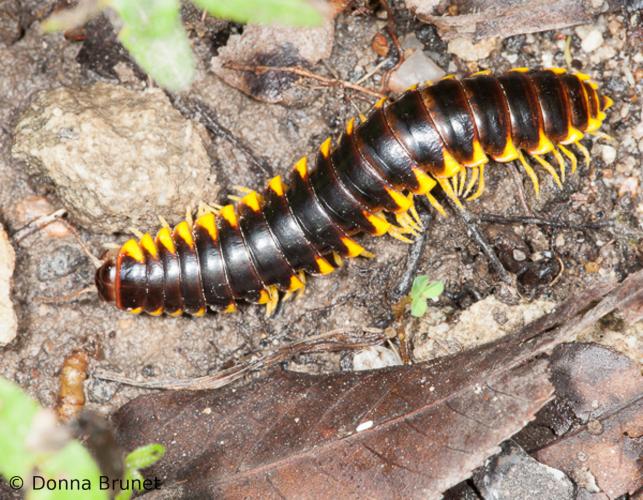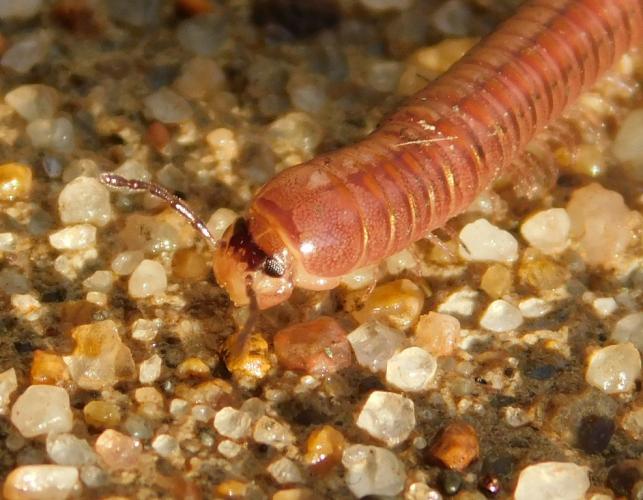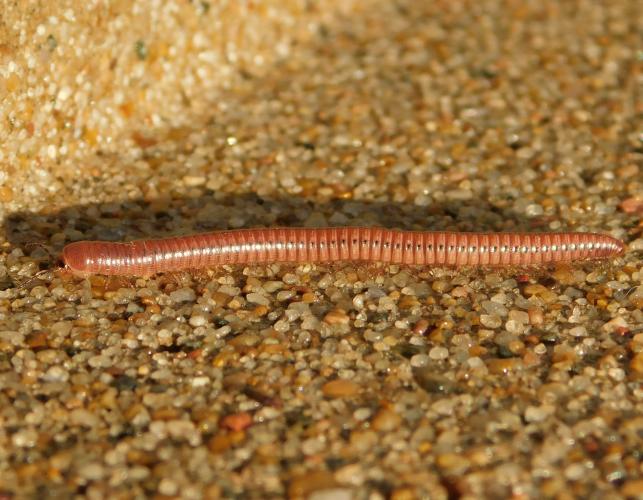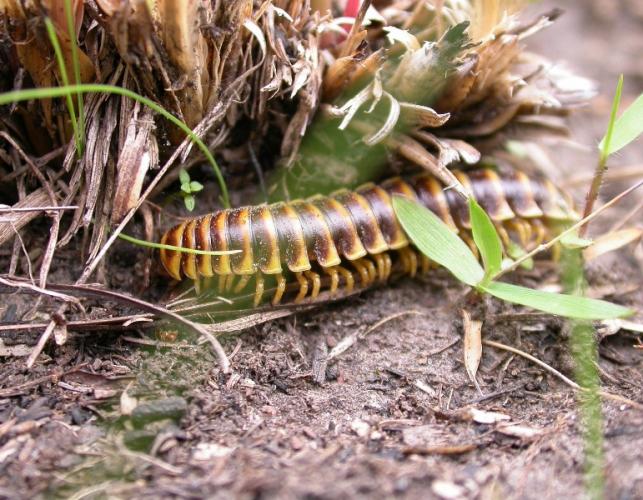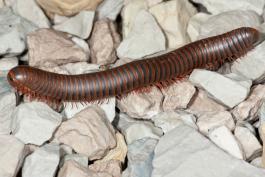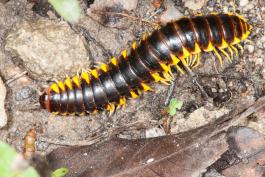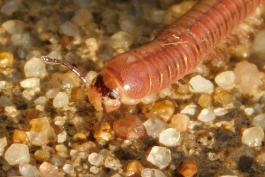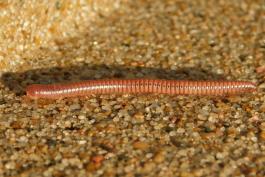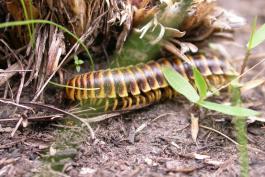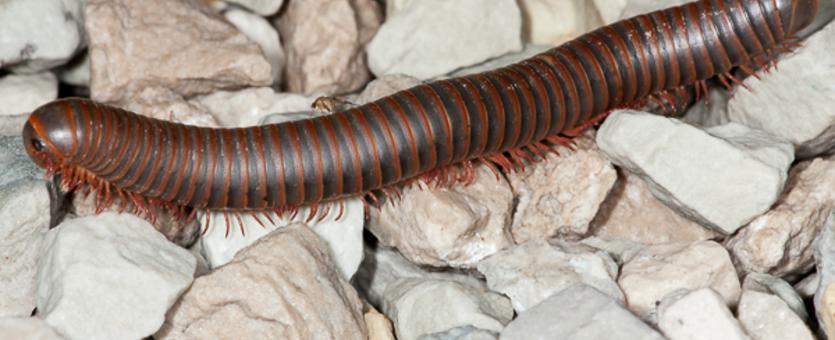
Millipedes are long, segmented animals that are most typically round in cross-section (not flattened). They are generally slow-moving. Apart from the first three body segments (which each have one pair of legs), and the head and tail, all the remaining body segments have two pairs of legs. The number of body segments varies with species, and additional segments are added as the millipedes grows and molts. Most of our species are brown or blackish. Millipedes with bright colors are more likely to secrete foul or toxic substances in defense — the bright coloration is a warning to predators.
Similar species: Centipedes (class Chilopoda) are usually flattened, move quickly, and have only one pair of legs per body segment. They have pincers, are mostly carnivorous, and are capable of biting.

Habitat and Conservation
Food
Status
Common, though not commonly seen or noticed.
Millipedes are a class of arthropods (jointed-legged invertebrate animals). Other major arthropod classes include the centipedes, the arachnids, the insects, and the various classes of crustaceans.
Life Cycle
Human Connections
Ecosystem Connections
